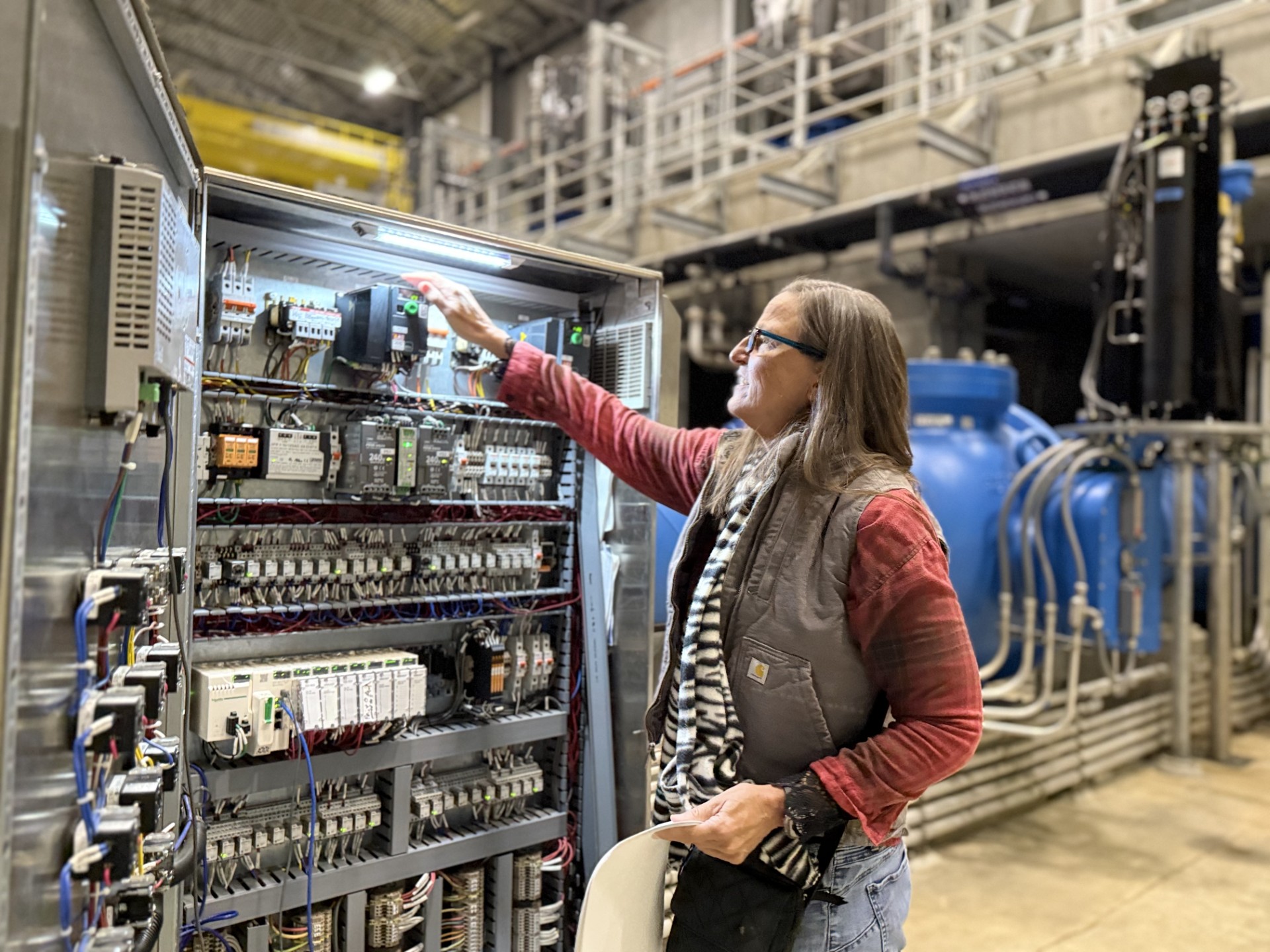
Shelly Hattan remembers the days when people looked for job listings in the newspaper. This was how she found her first job with Tarrant Regional Water District. It was the early 1990s and she had completed her civil engineering degree at the University of Texas at Arlington.
She interviewed with David Marshall, Director of Engineering at the time, and the position he offered sounded really interesting. Shelly started with TRWD in December 1994. She stayed with the district for about two years, and then moved on to work for the City of Fort Worth, the City of Arlington, and went out on her own for 10 years.
Shelly moved back to TRWD in 2009, just as the district started interviewing for positions related to a huge new undertaking called the Integrated Pipeline Project (IPL), a joint water supply project between TRWD and Dallas Water Utilities. When completed, this multi-year, $2.3 billion project will connect to existing water supplies in East Texas and add capacity to the water district’s system. Instead of two pipelines, Dallas Water Utilities and TRWD will use one joint pipeline.
As a staff engineer on the IPL project, Shelly moved to East Texas and now her office is her backpack. She checks into field offices at multiple locations, depending on where she goes on different days. As part of her job is to resolve any problems and keep the project moving, Shelly can sometimes be found troubleshooting out in the field.
She has traveled the world on factory fitness tests, viewing equipment and checking specifications to be sure everything will work well back at the construction site.
“There are so many bits and pieces that go into this project, and they all need to work together,” Shelly says.
“Our operations, SCADA (hardware and software), and instrumentation/electrical teams, who also attend these trips, are just amazing,” she explains. “They work with manufacturers to ensure that all the parts we’re considering will ‘talk’ to each other when they’re put into practice. These teams have even influenced manufacturers’ production with their suggestions.”
Shelly says the most exciting part of her job is “the incredible scale in which we work.”
“It’s staggering to think about the power of the IPL – it will be 150 miles of pipeline bringing six pump stations together – and 350 million gallons of water will flow through the largest pump station every day,” she says. “Imagine how accurate and reliable this project has to be.”
A self-confessed “nerd,” Shelly has a fascination with the minute workings of engineering and technical processes. She enjoys taking theory to real world application. She’s very involved with professional societies like the American Water Works Association, and currently serves as the national chairperson for the organization’s butterfly valve committee. The butterfly valve – like the wings of a butterfly – is a disc that opens and closes powerful valves like those on the IPL project.
“We have six of the world’s largest gate valves, which are 45 ft. tall and require more thrust to open than what it takes to send a shuttle into space,” marvels Shelly.
Shelly says that in all her career, she’s never had a chance to work on projects as varied and interesting as those at TRWD. She grew up in an Air Force family, and service was always an important aspect in their lives.
“What I’m doing at the water district is what I consider my service to the community,” she says.
As you might expect for someone with such technical interests, Shelly has interesting hobbies, such as high-power model rocketry. She’s traveled to different conferences and rocket launches around the U.S., joined by her daughter when she was younger.
Shelly is also a women’s roller derby referee, and even started the Cedar Creek Lake Roller Derby League. She’s been a referee for about 13 years, starting when her daughter was younger and played junior roller derby. Shelly enjoyed refereeing so much, she stayed involved after her daughter moved on from the sport. Today, Shelly travels to various locations keeping up with her hobby, having visited 26 different cities to referee by the end of 2024.
Story by Sally Crocker, contributing writer for Tarrant Regional Water District.

